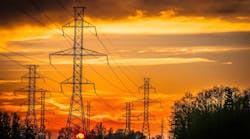It's all over the news - power lines wiped out by fallen trees, massive outages, no air conditioning and a record heat wave. There were plenty of smart meters that notified local utilities that they were losing power but that didn't help much. The problem is not lack of digitized, smart grid-able information. The problem is vulnerable physical infrastructure.
Much of the misery could be avoided by having more underground cable rather than overhead poles and wires.
No one that I know thinks overhead distribution lines are desirable. In the older parts of most cities the residential lines are particularly ugly where grand old trees have been trimmed (often butchered) to get line clearance. But, when those lines were built, underground cable, if it was even available was not really a feasible option. Material problems and poor manufacturing quality control led to premature failures which often lasted for hours, sometimes days, while crews located and repaired the fault. Also, we were still in the rosy afterglow of moving into an electrified era: we were just happy to have fairly reliable power.
Times have changed. We've moved up the Maslow triangle enough to where aesthetics and property value are important. Customers are more aware of the visual blight caused by crooked poles and spaghetti-like power and phone lines.
Distribution planners look at cable from another angle: modern underground distribution usually has a higher reliability than overhead because: 1) material and manufacturing science has provided underground technology with low failure rates and 2) underground cable is not susceptible to insulator contamination, falling trees, ice, drunk drivers, gunshots and other urban above-ground drama and trauma. It's estimated that underground distribution has reliability up to ten times better than its overhead cousin. However, cable outages may be longer than overhead outages because of time to repair, so the customer perceived service advantages are a bit of a wash unless the underground system is looped or networked. Those configurations, which are becoming common, provide automatic switching around the outage point, minimizing the number of affected customers.
Of course, underground systems aren't outage proof. They can be knocked out by flooding, severe earthquakes, and careless construction digging. But in general, modern underground distribution systems provide superior service.
New urban housing and residential developments usually have underground distribution systems. Many municipalities require new distribution lines to be underground. In addition many cities have undergrounding programs where urban renewal includes burying large sections of overhead distribution.
But that still leaves us with large areas of overhead distribution with the entire attendant tree trimming and insulator washing needs plus on-going storm and accident caused outages. And we can't expect customers to be so forgiving as they have been in the past. New studies show that rate payers are increasingly intolerant of outages. Particularly those of durations more than a few hours. (see We Better Get Used to Dealing with Smart Customers)
Utilities have been slow to replace existing overhead distribution with cable. It's a matter of cost. Starting from scratch, underground distribution costs at least twice that of conventional overhead. Converting overhead to underground would cost around $4,000 per customer on the average. One study estimated about $1 million per mile. So, if all distribution lines were undergrounded, even where the customer density is low, customer rates could double. That means that across the board undergrounding is not going to happen anytime soon.
However, it looks possible to convert overhead distribution to underground in many dense residential areas and raise the rates by considerably less. And after the latest storm damage, ratepayers may be willing to open their wallets a bit for better service.
Is anything going to change? Who knows, but you can bet in light of the recent storms and outages that utilities, city planners and state regulators will be sharpening their pencils.

